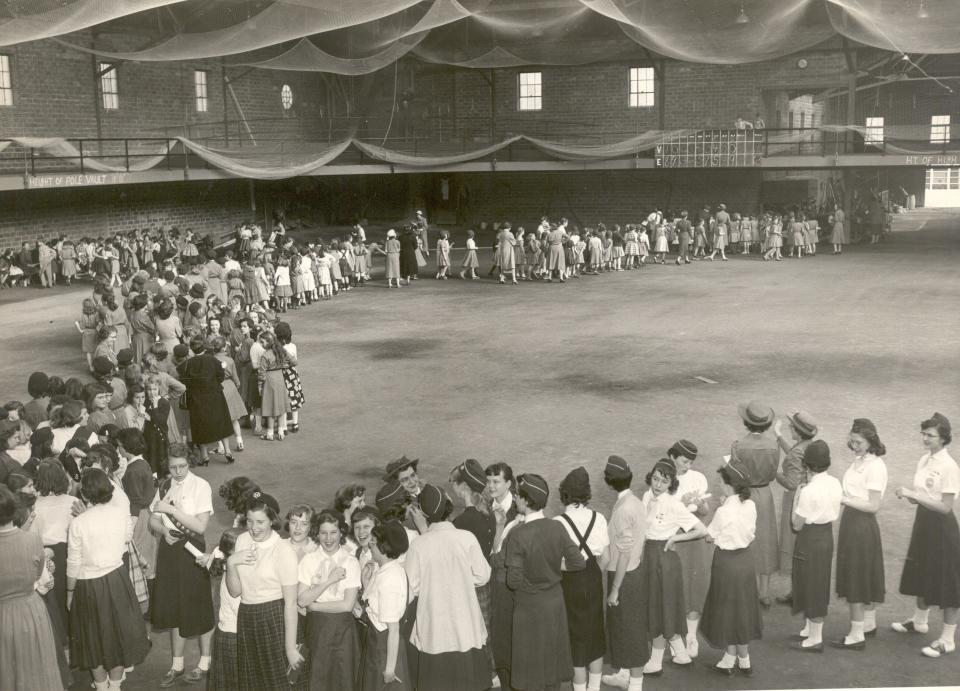Historically Speaking: Hollywood comes to Exeter
- Oops!Something went wrong.Please try again later.
Novelist John Knowles wasn’t from Exeter. Born and raised in West Virginia, he came to Phillips Exeter Academy as a member of the class of 1945 and set his most famous work, “A Separate Peace,” in Exeter. With these credentials, we can consider him an Exeter author.
“A Separate Peace”is set at a boys’ prep school in New Hampshire during World War II. Two boys, Gene and Finney, spend the summer term together, studying, following athletic pursuits and breaking rules. A coming-of-age story, it explores themes of loyalty, friendship, patriotism, and envy. Gene is studious. Finney is athletic. Finn’s teenage risk-taking leads them to create a fellowship he calls the Summer Suicide Squad, which requires members to leap from a tall overhanging tree branch into the waters of the fresh-water river (called the “Devon” to match the “Devon Academy” located in “Devon,” New Hampshire, fooling nobody). During one of these jumps, Gene, in a typically teenage moment, shakes the branch sending Finney to the ground instead of the water. Finney’s leg is fractured so badly that he will no longer be an athlete and will not be able to serve in the war. Finney’s response to this, and Gene’s guilt over the act dominate the remainder of the story as other characters come face-to-face with their own futures.

The novel was well received upon publication in 1959 and became a staple on many high school reading lists. In 1971, during another time in history when high school boys were facing the draft, it was announced that Paramount would be adapting the novel to film. What better setting than filming at the actual Devon Academy – Phillips Exeter Academy. “Filming for ‘A Separate Peace’ begins Feb 23 on locations at PEA” announced the Exeter News-Letter. “The cast and crew will be at Exeter for approximately three weeks filming winter carnival scenes and other major sequences.” February and March have always been our best months for snow.
Historically Speaking: The Exeter school of Practical Nursing
The casting was unusual, using actors with little or no previous experience. Most were boys recruited from the Academy, including John Heyl, who was cast to play Finney. Only Richard Parker Stevenson was from a different prep school – Brooks School in North Andover. Heyl later told the New York Times, “The first time I met our director, Larry Peerce, I laid it right on the line and asked him, ‘Just what are you looking for, some unexperienced, naïve student who doesn’t know anything about acting?’ and he quietly answered, ‘Yes.’” Richard, who had to change his working name to “Parker Stevenson” before the film was released, seemed reluctant as well, telling reporter Kurt Lassen that his reason for doing the film was to pay for Princeton and become an architect and city planner. “Acting is just a means to an end for me and I don’t have any desire to do it as a career.” Heyl became an educator. Parker Stevenson became famous for his role in “The Hardy Boys.”
The cast and crew set up headquarters in Amen Hall during filming. After completing the winter scenes, they returned in July to film the summer scenes. That particular summer, Exeter was reworking the downtown streets. The town square was heaped with piles of construction debris making it less than picturesque. For that reason, filming was confined to the Phillips Exeter campus, which worked well with the script. Only twice did the action move to other locations. Hampton Beach scenes were actually filmed at Salisbury Beach in Massachusetts. Scenes at the train station were filmed in Newfields at Rockingham Junction. After each day of shooting, the film was flown to Boston for developing then returned back to Exeter the following day for review by the production staff. Final editing took place over the winter of 1971-72, cutting the length by half.
Historically Speaking:The rise and fall of the greengrocer in Exeter
Viewing the film today (and this can be done on available streaming services) is a pleasure if you’re comfortable with the slow pace of 1970s media. The script follows the book nearly sentence by sentence with only a few changes. Finney breaks a school record in swimming in the novel, but in the film it’s a high jump filmed in the old Thompson cage. It’s quite a nostalgia trip to see the Academy as it was in 1971, only thinly disguised as the 1940s with costumes and dialogue quirks. The acting can be a bit clumsy, but considering the boys were not professionals at the time, they do a fairly good job.
The film premiered in late September of 1972 – but it wasn’t shown in Exeter. The Ioka was showing second-run films at the time. “A Separate Peace”had its New England premiere in Portsmouth at Loew’s Cinema. The Ioka was showing “Nicholas and Alexandra” during the same week. The box office take was $921,268.00 – a moderate success, but certainly not a blockbuster even for 1972. It lives on in classrooms where it is frequently shown to students. The tree featured in pivotal scenes was locally famous for decades. It was quietly taken down in 2016 by the Academy. As a snapshot of Exeter in the early 1970s, the film is still worth a view.
Barbara Rimkunas is the curator of the Exeter Historical Society. Support the Exeter Historical Society by becoming a member. Join online at: www.exeterhistory.org.
This article originally appeared on Portsmouth Herald: Historically Speaking: Hollywood comes to Exeter

